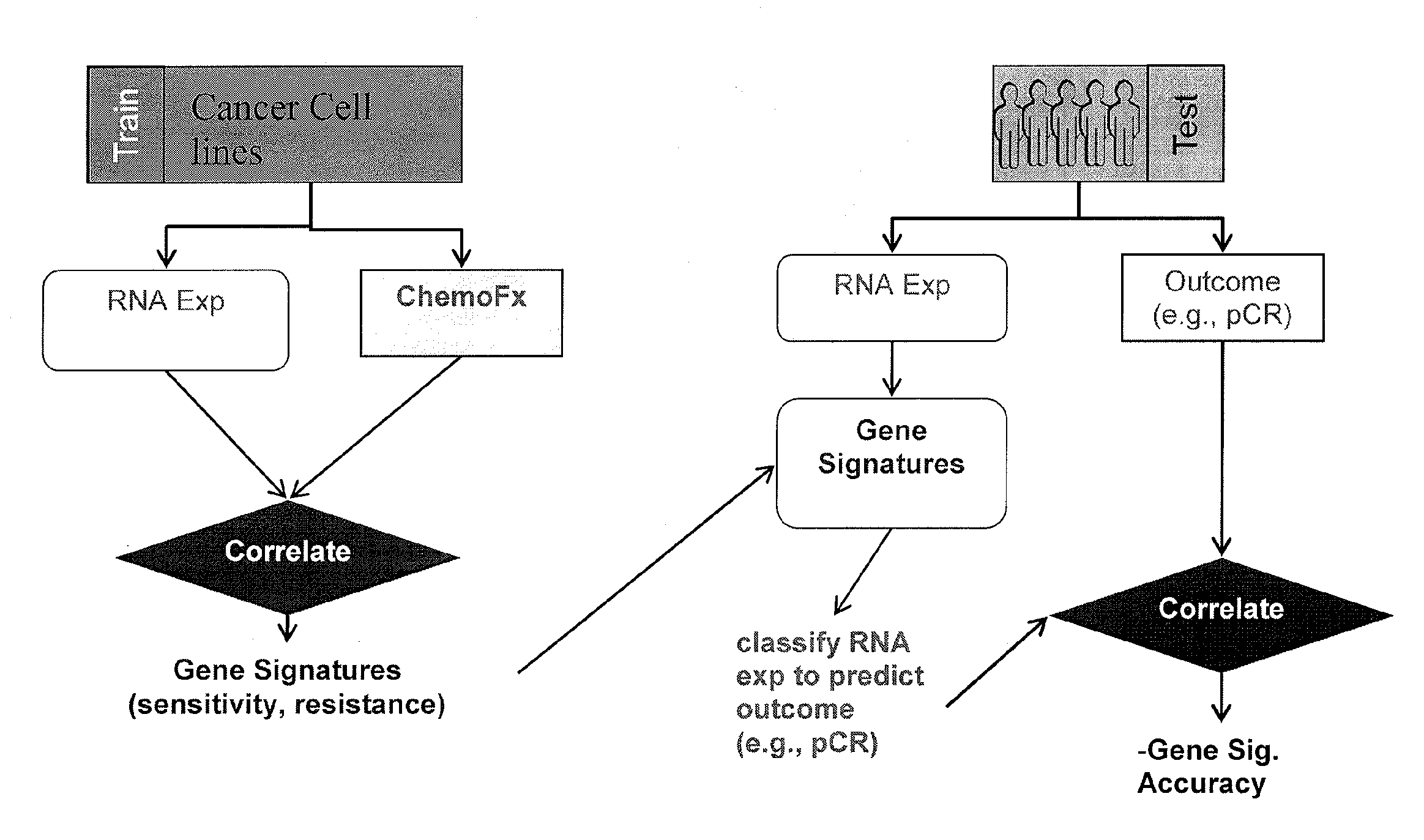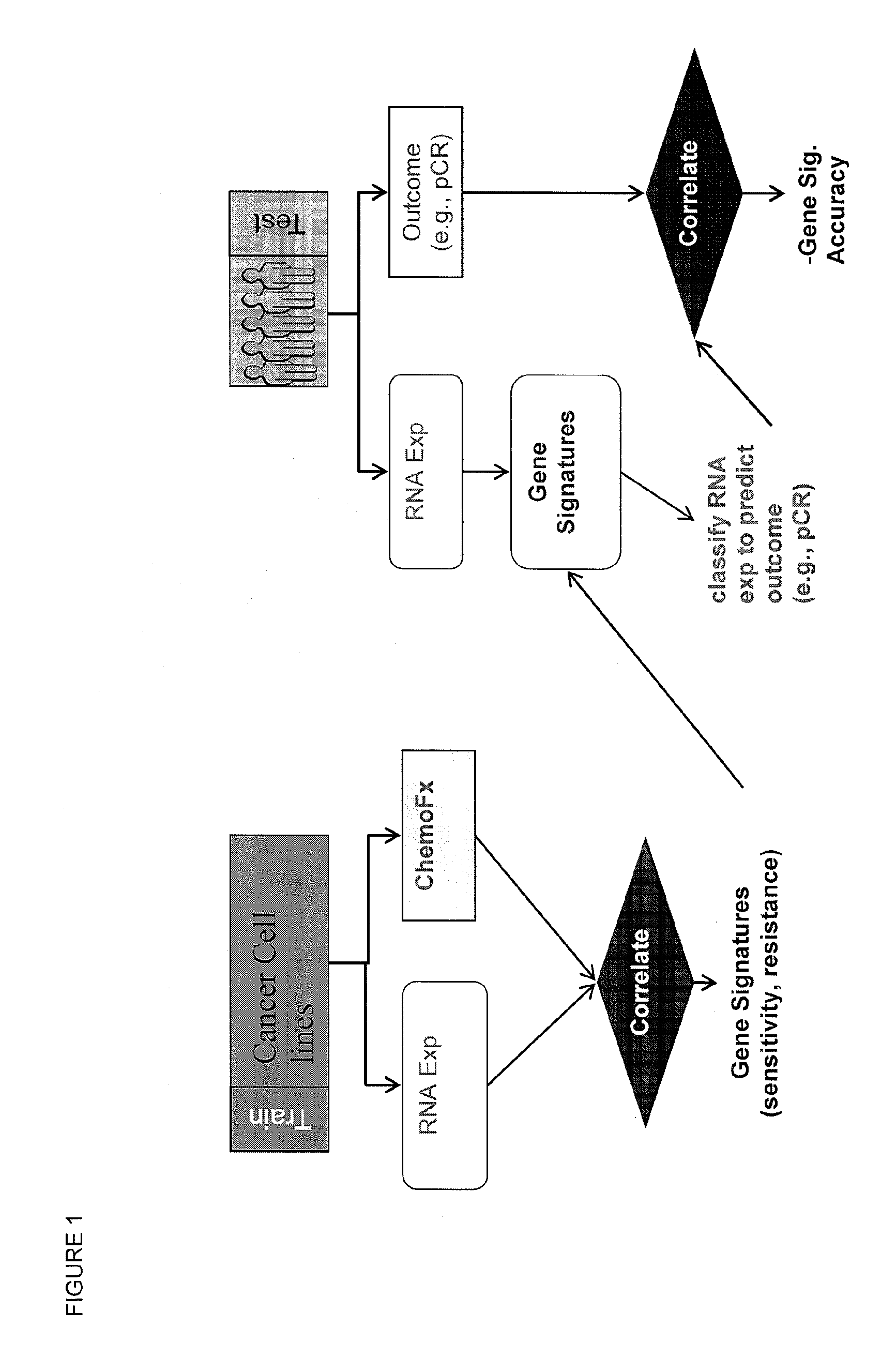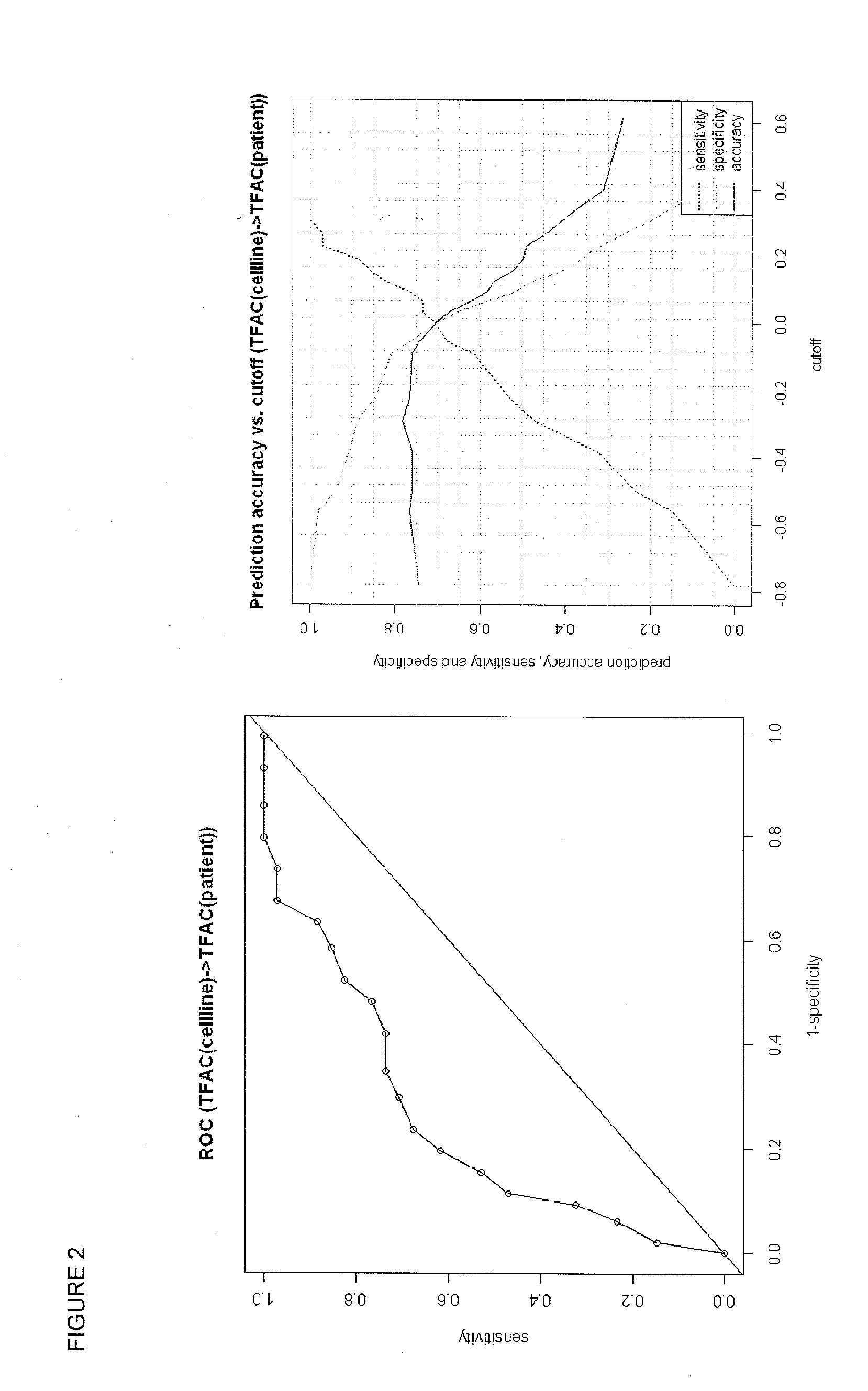Methods and systems for evaluating the sensitivity or resistance of tumor specimens to chemotherapeutic agents
a tumor specimen and sensitivity technology, applied in the field of molecular diagnostics, can solve the problems of increased health care costs, death, and inability to achieve optimal chemotherapy, and achieve the effect of complete and/or accurate prognosis and/or predictive, and reduced the length of time and quantity of patient samples
- Summary
- Abstract
- Description
- Claims
- Application Information
AI Technical Summary
Benefits of technology
Problems solved by technology
Method used
Image
Examples
example 1
Identifying Gene Expression Signatures
[0121]Cancer cell lines (breast cancer) from a Berkeley Labs collection (Neve et al., A collection of breast cancer cell lines for the study of functionally distinct cancer subtypes. Cancer Cell, 10, 6:515-27 (2006)) were tested for their sensitivity in vitro to the combinations TFAC, EC, AC, and ACT. TFAC is the combination of cyclophosphamide, doxorubicin, fluorouracil, and paclitaxel. EC is the combination of cyclophosphamide and epirubicin. AC is the combination of cyclophosphamide and doxorubicin. ACT is the combination of cyclophosphamide, docetaxel, and doxorubicin. In vitro chemosensitivity was determined using the ChemoFx™ assay (Precision Therapeutics, Inc., Pittsburgh, Pa.).
Cell Line NameATCC Deposit NumberAU565CRL-2351BT20HTB-19BT474HTB-20BT483HTB-121BT549HTB-122CAMA1HTB-21HCC1143CRL-2321HCC1187CRL-2322HCC1428CRL-2327HCC1500CRL-2329HCC1569CRL-2330HCC1937CRL-2336HCC1954CRL-2338HCC202CRL-2316HCC38CRL-2314MCF10ACRL-10317MCF7HTB-22MDAMB1...
example 2
Validating Gene Expression Signatures
[0131]The gene expression signatures resulting from the above analysis were validated in patient populations by comparing publicly available patient tumor gene expression data (based on hgu133a microarray platform) with the corresponding outcome of treatment with TFAC, EC, AC, and ACT. The validation sets were as follows.
[0132]133 neoadjuvant breast cancer patients, treated with TFAC, and outcomes evaluated for pCR (“Pusztai set”). Hess, K R, Anderson, K, Symmans, W F, Valero, V, Ibrahim, N, Mejia, J A, Booser, D, Theriault, R L, Buzdar, A U, Dempsey, P J, Rouzier, R, Sneige, N, Ross, J S, Vidaurre, T, Gomez, H L, Hortobagyi, G N, Pusztai, L (2006). Pharmacogenomic predictor of sensitivity to preoperative chemotherapy with paclitaxel and fluorouracil, doxorubicin, and cyclophosphamide in breast cancer. J. Clin. Oncol., 24, 26:4236-44.
[0133]37 neoadjuvant breast cancer patients, treated with EC, and outcomes evaluated for pCR (“Bertheau set”). Ber...
example 3
Testing the Stability of the Multigene Predictors
[0145]The stability of the multigene predictors were tested with a sensitivity analysis, and the results shown in FIGS. 7 and 8.
[0146]The left panel of FIG. 7 shows that the gene expression signature of Tables 1 and 2 is stable over a large range of increasing gene number, from less than about 10 to over 400 genes. The right panel shows that the gene expression signature of Tables 3 and 4 is stable over a large range of gene number, from about 100 to over about 400 genes.
[0147]The left panel of FIG. 8 shows that the gene expression signature of Tables 5 and 6 are stable over a large range of increasing gene number, from less than about 10 to over 400 genes. The right panel shows that the gene expression signature of Tables 7 and 8 are stable over a large range of gene number, from about 10 up to about 400 genes.
[0148]Without further description, it is believed that one of ordinary skill in the art can, using the preceding description ...
PUM
| Property | Measurement | Unit |
|---|---|---|
| Tm | aaaaa | aaaaa |
| temperature | aaaaa | aaaaa |
| pH | aaaaa | aaaaa |
Abstract
Description
Claims
Application Information
 Login to View More
Login to View More - R&D
- Intellectual Property
- Life Sciences
- Materials
- Tech Scout
- Unparalleled Data Quality
- Higher Quality Content
- 60% Fewer Hallucinations
Browse by: Latest US Patents, China's latest patents, Technical Efficacy Thesaurus, Application Domain, Technology Topic, Popular Technical Reports.
© 2025 PatSnap. All rights reserved.Legal|Privacy policy|Modern Slavery Act Transparency Statement|Sitemap|About US| Contact US: help@patsnap.com



